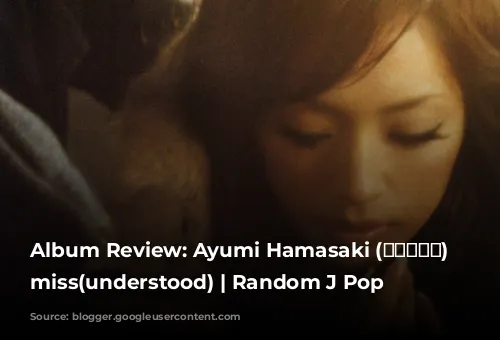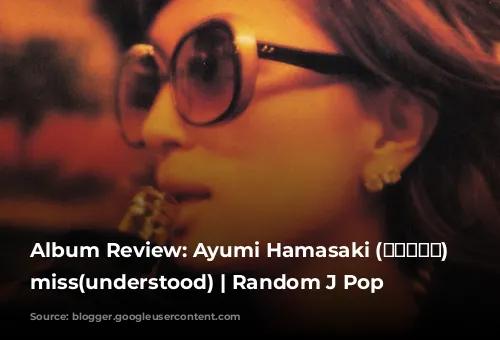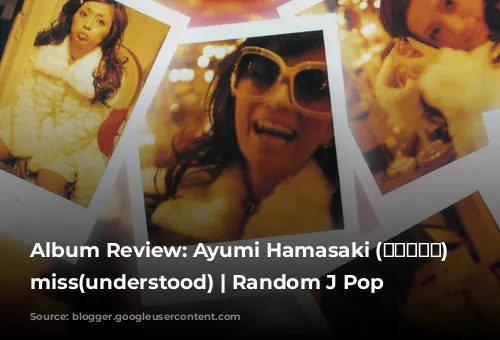Ayumi Hamasaki’s 2006 album, (Miss)understood, marked a turning point in her musical journey, and not in a good way. It was a time of internal conflict, a clash between her desire to explore new sounds and her fear of straying too far from what had made her successful.
The album’s cover art, with its playful and cute aesthetic, promised a fun, upbeat record. However, the music itself didn’t live up to this initial impression, except for the opening track, “Bold & Delicious.” The rest of the album felt like a mishmash of styles, lacking a cohesive identity.
One of the biggest missteps was the inclusion of tracks from the German pop project Sweetbox. While Ayumi was drawn to their music, the attempt to integrate their sound with her usual style resulted in a jarring clash. Some songs felt like they were trying to be something they weren’t, leading to a sense of disconnect.
This reliance on Sweetbox’s material also highlighted a reluctance to truly embrace change. A bolder move would have been to work with Sweetbox directly, allowing them to create an entire album for her. This approach could have led to a truly unique and exciting record, exploring new musical directions that were well within Ayu’s capabilities.
Even though the Sweetbox songs offered a fresh perspective, Ayumi and Avex, her record label, seemed hesitant to fully commit to this new direction. They preferred the familiar, the tried-and-true sounds that had brought Ayu success in the past. This resulted in an album that felt like a timid attempt at a “soft reboot,” lacking the conviction to fully embrace the change it promised.

A Comfort Zone Too Comfortable
While the non-Sweetbox songs on (Miss)understood displayed Ayu’s mastery of her established sound, they also revealed a certain complacency. After six consecutive number one albums, she seemed content to play it safe, relying on formulas that had proven successful.
Avex, too, was unwilling to shake things up. Their formula for Ayu’s success had worked for so long, and they were afraid of jeopardizing it with an album that pushed boundaries.
But in 2006, the music scene was shifting. Ayu’s peers were already embracing new sounds, experimenting with different styles, and exploring the outer limits of their musical identities.
Hikaru Utada had already transitioned to synth-pop, leaving her R&B roots behind. Namie Amuro was about to reinvent herself with a new sound and image, preparing for a triumphant comeback. And Kumi Koda had established herself as a musical chameleon, effortlessly adapting to various genres and achieving success with each new venture.
Ayu, however, remained stuck in a comfort zone, clinging to the past and missing the opportunity to evolve alongside her contemporaries.

Missing the Mark
(Miss)understood’s attempt to empower women with its message of strength and self-reliance was ironic, considering Ayu’s own reluctance to embrace change.
The album’s greatest weakness lay in its lack of memorable melodies and strong hooks. While some songs featured interesting instrumentation and dense soundscapes, they lacked the crucial elements that make a song truly captivating.
Ayu’s vocals, while always energetic, suffered from poor mixing on several tracks, making them difficult to discern. This further emphasized the lack of strong melodies and choruses, which left many songs feeling flat and forgettable.
While (Miss)understood is not a terrible album, it lacks the standout moments and memorable tracks that define her other work. The album’s lack of focus and its unwillingness to fully commit to a new direction left it feeling bland and ultimately forgettable.
(Miss)understood represented a missed opportunity for Ayumi Hamasaki. Instead of embracing change, she clung to the familiar, resulting in an album that lacked the boldness and creativity she was known for. While it wasn’t a disaster, it certainly wasn’t a success. It’s a reminder that even the most talented artists need to be willing to take risks and evolve to remain relevant and impactful.












